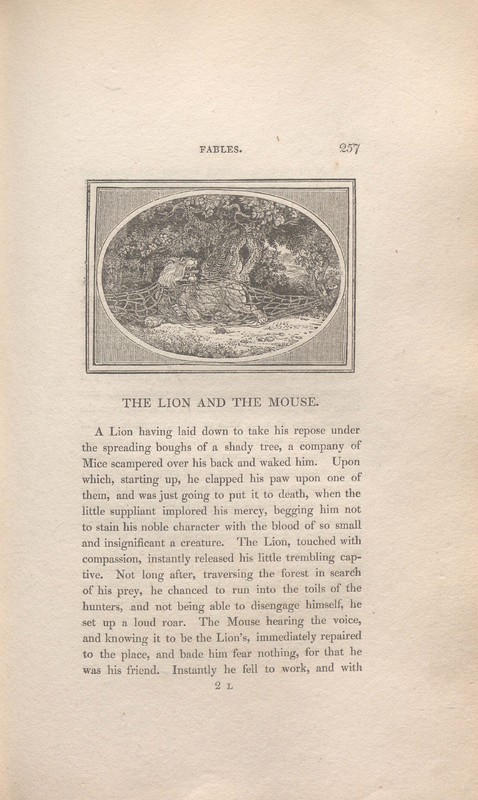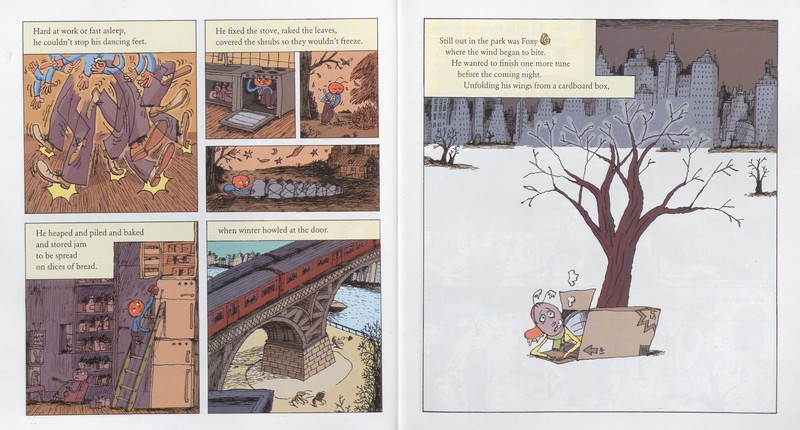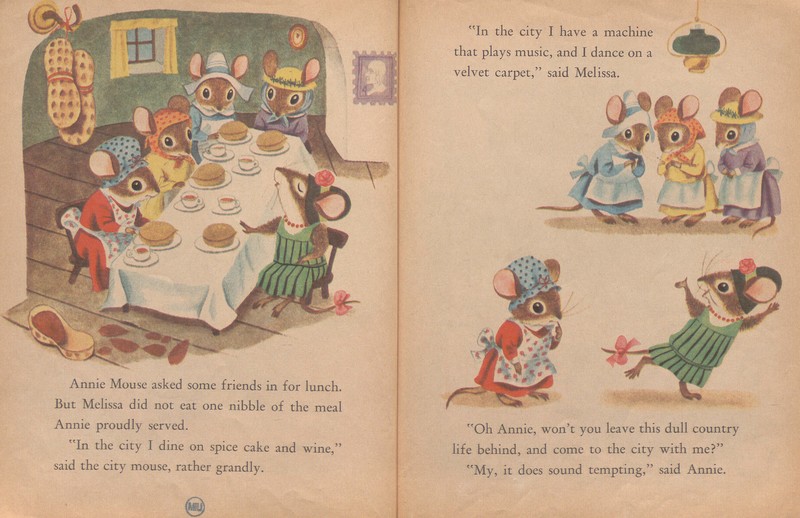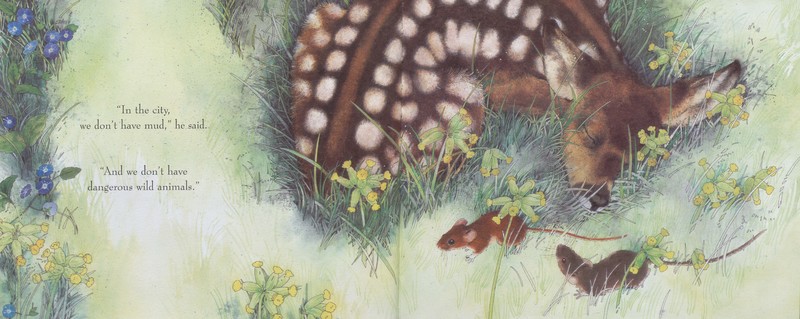The Town Mouse and the Country Mouse
A Town Mouse visits a cousin in the country and disdains the Country Mouse’s lifestyle. They both then visit the city and are confronted by several dangerous situations, even though they eat well. The Country Mouse decides that the quieter, rural life is to be preferred.
The Fables, with a Life of the Author, and Embellished with 112 plates (1793) Aesop (author). Samuel Croxall (translator)
The text excerpt on display is from the “Application” portion that follows each fable in this book, instructing readers on the story’s moral and on the appropriate course of action after the conclusion of the story. For Town Mouse Country Mouse, the accompanying advice is longer than the text of the tale within the volume and offers readers explicit insight into the politics of the time shortly after the French revolution, which started in 1789.
This edition of The Fables was published in 1793 by John Stockdale, an Englishman who worked very closely with the English crown and with political reactionaries attempting to preserve political order at a time of great instability. Conservative economics at the time rewarded the wealthy elite, who could afford to retire in the countryside to escape the stress of politics in the years following the Revolution, taking with them expensive volumes such as this one.
The fable extols the virtues of modest life in the countryside over sumptuous and dangerous homemaking in the urban world, and refers allegorically to the politics of the times. In the context of the French Revolution, urban spaces were associated with revolutionary politics and extravagance while the countryside was closely linked to a return to traditional agrarian values that would not support the overthrow of the government.
--Jane Sheedy
The Country Mouse and the City Mouse: Three Aesop Fables (1961). Patricia Scarry (author). Richard Scarry (illustrator)
In this illustration, Annie, the country mouse, is wearing a bonnet, a simple gown, and an apron, while Melissa, the city mouse, is wearing a decorative hat, a pleated dress, and a necklace.
The Little Golden Book’s edition of The Country Mouse and the City Mouse is illustrated by Richard Scarry. His depictions of the two mice include clothing that highlights the lifestyle differences between them. Annie, the country mouse, is wearing a bonnet, a simple gown, and an apron, while Melissa, the city mouse, is wearing a decorative hat, a pleated dress, and a necklace.
Scarry exclusively uses animal characters in his illustrations so that all children can better identify with them. Instead of using human characters with, for example, blonde hair, his animal characters take on human roles. The mice in this Golden Press edition drive cars and cook meals, like any human character would, but because they are mice, any barriers that might limit children’s identification with their physical characteristics are eliminated.
The price on this book is only twenty-five cents, the same price tag that had initially driven the popularity of Little Golden Books when they were first published in the 1940s, a time when most children’s books cost two or three dollars. The low price point allowed the lessons demonstrated in this classic Aesop’s fable to be accessible to a wide variety of children, adding to the accessibility already created by Scarry’s animal characters. The moral of this story, that living a simple and happy life is better than living an extravagant life with constant fear, is still relevant. Because of this, The Country Mouse and the City Mouse and other Little Golden Books are still around today, creating a sense of nostalgia for the adults reading this story to their little ones.
--Sarah O’Donnell
The Town Mouse and the Country Mouse (2012). Helen Ward (author and illustrator)
In this illustration, the Town Mouse and Country Mouse pass in front of a sleeping fawn that is placed in the center of the page spread. The animals are surrounded by green grass and wildflowers.
The illustrations in this book are directed towards both an adult and child audience to encourage parents to engage with their children in reading. For example, in the above page, the Town Mouse’s snide comment about dangerous animals is ironically placed next to a gentle, warm image of a sleeping fawn. While a child may not appreciate this juxtaposition, it might elicit a chuckle from a parent. Ward’s general style of illustration is realistic, rather than over-simplified and cartoonish, as is often the case with illustrations intended for early child readers.
Ward was born in 1962 and longs for the bygone days of simplicity prior to modern technology’s dominance in daily life. Her use of warm, golden tones creates a sense of contentment on pages about the countryside. These images appeal to parents who, being a little older themselves, might share Ward’s sentimental feelings towards simpler days when nature was more appreciated.
This book was published at a time when many UK government initiatives about early childhood development included the support of childhood literacy. Since the 1980s parental involvement has been recognized in government initiatives regarding childhood literacy. In 2006, a large review of early childhood reading reinforced the importance of creating positive attitudes towards reading. Ward, as an artist who emphasizes stepping away from technology, created a book for an adult audience that was being encouraged by the government to read with children. Ward unites these values to craft a book that entertains both caregivers and children.
--Liv Drlik

The Lion and the Mouse

The Ant and the Grasshopper



